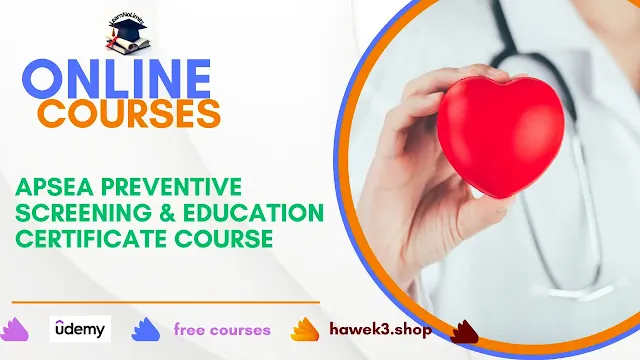Master Vital Signs Screening: Your Gateway to Hands-On Healthcare Experience
If you’ve ever stood in a clinic, hands trembling, wondering how to take a blood pressure reading that doesn’t sound like a random number generator—this course is your antidote to impostor syndrome.
For aspiring healthcare professionals, clinical experience isn’t just a checkbox for applications. It’s the bridge between textbooks and real lives. This free course isn’t about memorizing protocols—it’s about mastering the core screening techniques that build confidence, competence, and compassion. By the end, you’ll not only measure vital signs—you’ll interpret them, counsel patients, and navigate ethical dilemmas like a seasoned pro.
Let’s begin.
What You Will Learn
This course is a toolkit for future clinicians. You’ll walk away able to:
Accurately measure blood pressure, BMI, and blood glucose—no more guessing.
Interpret heart rate, respiratory rate, and pulse oximetry like a diagnostician.
Counsel patients on diabetes and hypertension prevention using evidence-based guidelines.
Navigate patient interactions with empathy, ethics, and cultural competency.
Respond to emergencies like critically high blood pressure or abnormal EKG readings.
You’ll also gain skills rarely taught in classrooms: grip strength assessments, waist circumference tracking, and one-lead EKG basics.
Prerequisites: What You Need
Zero experience required: Designed for absolute beginners.
A willingness to practice: Use friends, family, or even a willing pet (kidding… mostly).
A smartphone or computer: Access videos, quizzes, and reference charts.
This course meets you where you are—whether you’re a pre-med student or a community volunteer.
Why This Course Works
Most clinical skills courses overwhelm learners with jargon. This one is different. Built by instructors who’ve trained hundreds of screening volunteers, it focuses on:
Practical repetition: Measure blood pressure 10 times in 10 minutes with guided videos.
Real-world scenarios: Role-play patient interactions (“How do I explain BMI without shaming?”).
Critical thinking: Diagnose mock cases using vital signs and preventive guidelines.
You won’t just “learn” screening—you’ll live it.
Who This Course Is For
This course is for anyone who’s ever:
Fumbled a blood pressure cuff during a volunteer shift.
Felt unprepared to explain cholesterol numbers to a concerned patient.
Dreamed of working in healthcare but lacked hands-on training.
Specifically, it’s ideal for:
Pre-med/pre-nursing students needing clinical hours.
APSEA/NADI volunteers preparing for community screenings.
Career changers entering public health or patient advocacy.
If you’ve ever thought, “I want to help, but I don’t know how,” this is your launchpad.
Course Content: Your Roadmap to Confidence
1. Introduction & Pre-Assessment
Why screening matters: Preventative care’s role in reducing chronic disease.
Ethical foundations: Patient privacy, informed consent, and cultural humility.
2. Primary Screening Techniques
Blood pressure mastery: Avoid the “white coat effect” with proper cuff placement.
BMI and waist circumference: Discuss obesity risks without judgment.
Blood glucose and cholesterol: Spot prediabetes and cardiovascular risks early.
3. Beyond the Basics
Heart and respiratory rates: Decode tachycardia vs. bradycardia.
Pulse oximetry: Recognize silent hypoxia (a COVID-era essential).
One-lead EKG: Identify atrial fibrillation or sinus arrhythmia.
4. Chronic Conditions Deep Dive
Diabetes: From pancreas physiology to HbA1c targets.
Hypertension: Teach patients about sodium intake without sounding like a scold.
5. Patient Interaction Lab
Role-play scenarios: Practice delivering tough news (“Your BP is 160/100…”).
Ethics in action: Balance honesty with hope when discussing lifestyle changes.
6. Self-Care for Screeners
Avoid burnout: Nutrition, exercise, and stress hacks for long volunteer days.
Cultural competency: Ask, “What does health mean to you?” before lecturing.
Why Blood Pressure is the Ultimate Litmus Test
Imagine this: A patient’s reading is 180/110. Instead of panicking, you:
Recheck with proper technique.
Counsel calmly: “Let’s talk about stress management and follow-up care.”
Document accurately: Note irregularities for their primary provider.
This skill alone can save lives—and it’s taught in Module 2.
Common Screening Mistakes (And How to Fix Them)
Cuff over clothing: Adds 10-15 mmHg error. Always use bare skin.
Talking during BP measurement: Raises readings. Teach patients to stay silent.
BMI shaming: Say “Let’s focus on health markers, not weight,” to build trust.
Your First Assignment
Grab a blood pressure cuff (borrow or buy a $20 manual one).
Measure 5 people. Note how readings vary with posture, stress, and time of day.
Reflect: How will you explain variances to anxious patients?
This exercise transforms theory into muscle memory.
Real-World Impact
Scenario: A volunteer catches a hypertensive crisis in a seemingly healthy 35-year-old.
Result: Early intervention prevents a stroke.
Why This Course Beats Shadowing
Shadowing lets you watch. This course lets you do. You’ll:
Practice 12+ techniques until they’re second nature.
Earn a certificate to showcase skills on applications.
Join a community of APSEA/NADI volunteers making tangible impacts.
Final Thought: Screening Is a Privilege
Patients don’t owe you their trust. You earn it by:
Listening more than lecturing.
Explaining numbers in context (“Your BMI is one of many health markers”).
Following up: Connect them to resources, not just data.
This course isn’t about technical perfection. It’s about showing up with skill and heart.
Ready to Begin? This Free Course Awaits.
No fees. No fluff. Just 1 hour and 22 minutes to:
Master lifesaving screening techniques.
Build confidence for clinical settings.
Join a mission to prevent disease, one patient at a time.
Enroll now. Your future patients are waiting.

